Review: Lenovo Ideapad Lynx Windows 8 Tablet, a more budget friendly option

There is a modest assortment of Windows 8 tablets available these days. We've taken a look at the Microsoft Surface, the Acer Iconia W510, and the Samsung ATIV Smart PC500 and find them all to be capable Windows 8 tablets. We now turn our sights on the Lenovo Lynx Windows 8 Ideapad.
The Lynx is a 11.6" tablet that is well built but one of the more budget friendly tablets available. The tablet alone is currently running $350 over at Amazon.com and if you shop around (and take advantage of some timely coupons), you can snatch up the tablet with keyboard dock for under $400.
Lenovo did a respectable job with the Lynx and while there is some room for improvement, we found the Lynx Ideapad to be a steal of a deal and another capable Windows 8 tablet.
Design
The Lynx tablet measures 11.8 x 7.4 x .37 inches and weight a measly 1.47 pounds. The weight is distributed nicely and the Lynx feels as though it weighs a lot less. With the 11.6" screen, the Lynx is larger than the Microsoft Surface and Acer W510 but is comparable in size with the Samsung Smart PC500 but with a slightly lighter feel to things.

Along the top of the Lynx you'll find the power button and microSD card slot that is protected by a hinged plastic cover. On the top left side you will find the screen rotation lock and volume key. To the right side is the 3.5mm headphone jack and micro HDMI port. The Lynx's speakers rests on either side, just above the mid-way point.
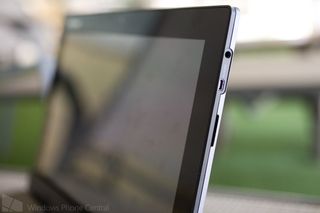
To the bottom of the Lynx is a micro USB charging port. This is one of the places where Lenovo really did a good thing with the Lynx. In using a micro USB port to charge the Lynx, your Windows Phone chargers can be used in an emergency. The micro-USB port can also be used as an I/O port and is also used as the keyboard dock's point of connection.
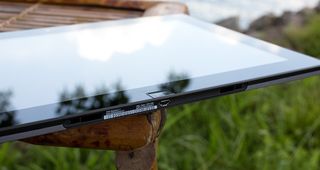
You have a 2MP front facing web cam but no rear facing camera. The Lynx lacks NFC but does have Bluetooth 4.0, Wi-Fi, an ambient light sensor, proximity sensor, and a compass.
Get the Windows Central Newsletter
All the latest news, reviews, and guides for Windows and Xbox diehards.

Packaging includes the charger, micro-USB cable, a micro-USB to USB cable and a microSD prying pin. The microSD slot is a little on the narrow side and the pin (more or less a paper clip) can help push down on the card to allow the spring to release and raise the card. I found a fingernail works just as well and you avoid the risk of losing the microSD prying pin.
Another nice design feature with the Lynx is an internal, magnesium alloy roll cage frame to protect the internal components. The shell of the Lynx is textured plastic that does have a little give to it but with the roll cage in place, the give shouldn't be a concern.
No complaints whatsoever about the screen. The screen quality makes for a rather pleasant experience when using the Lynx. Brightness levels were good, colors had a little pop and the touch sensitivity was very responsive. I do not believe (can't find any confirmation) that Gorilla Glass is in play with the Lynx. If the Lenovo opted against using Gorilla Glass, it may very well be the only area where the screen is lacking.
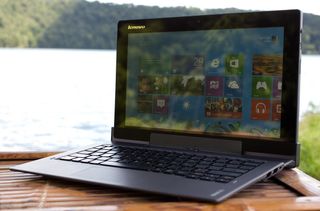
How's the screen outdoors? Not too bad. On a bright sunny day you may have some glare issues but the screen is viewable. The ambient light sensor does keep things in check a little and if it gets too dim, you can always go into the settings and turn off the auto brightness. On the plus side though, the auto brightness setting does help with power management.
Overall, the Lenovo Lynx is designed very well. The Lynx has a nice feel to it, a sharp looking screen, and it won't weigh you down. The microSD card flap is the weak point and if you access the expansion slot a lot, you're likely to lose it eventually. The Microsoft Surface Tablets are likely the cream of the crop with respect to build quality. While the Lenovo Lynx has a bit of a plastic feel to it, its build quality is respectable in its own right.
Under the Hood

Under the hood the Lynx is fitted with an ATOM dual core 1.8GHz processor, 64GB of internal storage and 2GB of RAM. Everything is powered by a Lo-Ion polymer battery that is rated for 8 hours.
The ATOM processor moves things along nicely for the most part and helps the Lynx get the most out of its battery. 64GB of internal storage gives you a little more elbow room and with the microSD expansion card slot and your Skydrive account, storage should not be an issue.
The Keyboard Dock

The Lenovo Keyboard Dock for the Lynx has a bit of a plastic feel to it but not in a Fisher-Price toy manner. The keyboard is one of the nicer feeling we've seen. Keys have a bit of a bounce to them and the keyboard size is very receptive to larger hands. The keyboard has a multitude of function keys, one of which closes any open applications with a single stroke. Which means no more Alt+F4 key presses.
The touchpad on the other hand is a bit on the sensitive side. More times than not a simple brush was seen as a tap that launched an app or another unwanted action. Unfortunately, I do not see any settings to adjust the touchpad sensitivity.

The keyboard dock is fitted with an internal battery that charges the Lynx's battery. Essentially doubling the battery life of the Lynx to about 16 hours. The keyboard dock has two USB ports and a micro-USB charging port that will charge both the keyboard and tablet. The only thing missing is a SD Card reader.
The docking area is basically a pocket that encloses the bottom frame of the tablet. Metal hooks latch on to the docking ports and the Lynx snaps into place with an authoritative click. There were a few occasions when it took a few seconds for the keyboard dock to register with the tablet. During that time the keyboard is more or less a big battery but once it kicks in, it's performs just peachy.
The keyboard can be a little pricey, often running close to $150. However, it is often on sale at various retailers (and directly through Lenovo) for $100. If your budget will reach far enough, the keyboard dock makes for a very appealing accessory.
Software
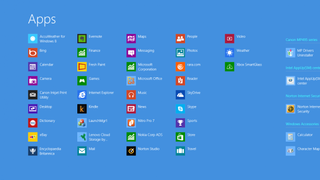
The Lenovo Lynx runs the 32-bit version of Windows 8. Lenovo did a nice job of keeping the pre-installed software to a minimum and whatever is installed, can be uninstalled if you need to free up storage space.
Pre-installed software varies from market to market so what's installed on my Lynx may be a little different than what's installed on someone else's. In general, you have the following installed.
Lenovo Cloud Storage, Microsoft Office Trial, Nitro Pro 7 PDF, Norton Internet Security, SymSlient, AccuWeather, Amazon Kindle, eBay, Encyclopedia Britannica, Evernote, Fresh Paint, Merriam Webster, Norton Studio, Rara, and Skype
No complaints about the software aspect of the Lenovo Lynx. I do wish that there was some consistency to the pre-installed selections. For example, my wife had Photoshop Elements 11 pre-installed on her Samsung ATIV tablet and the Surface came with the full version of Office. Both would have been dandy on the Lenovo.
Side Note: Last night I updated the Lenovo Lynx to Windows 8.1 Preview and it really makes a difference. Not sure what fine tuning Microsoft did but the ATOM processor seems to have a little more pep to it and Wi-Fi performance moved along with a little more gusto as well. Windows 8 isn't a slouch when running on the Lynx but 8.1 shines noticeably brighter.
Overall Performance

While the Lenovo Lynx is a budget friendly Windows 8 tablet, Lenovo really didn't scale the Lynx back too much. It is missing a rear camera, NFC, and more than likely Gorilla Glass (still haven't confirmed). But I don't see any of these missing items are deal killers.
64GB of storage with the expansion card (and SkyDrive) will satisfy most and the micro-USB port is a really nice feature and eliminates the need for proprietary chargers.
The screen is respectable, build quality solid, battery life gets you through the day (if not days) and overall performance has enough zip to prevent you from falling asleep as apps load. The keyboard dock expands the capabilities of the Lynx with an extended battery, extra USB ports and a very comfortable keyboard. I do wish the touchpad was a little less responsive though.
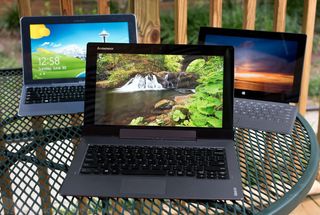
Of the tablets we've reviewed which is the best? Between the Surface, Acer, Samsung and Lenovo all three are capable machines and cover a wide range of price points. As with most of the Windows 8 tablets, I don't see them replacing my laptop but rather supplementing it.
The Surface has the better build quality and had Microsoft offered a keyboard dock, it might just be the clear front runner. I think the Samsung edges out the Lenovo with regards to features and maybe a slightly better screen. The Acer also gets high marks for build quality but the keyboard is a little on the cramped side (or at least it was for me).
The Lenovo Lynx can hold its own nicely up against the other Windows 8 tablets. The 11.6" screen means you get a little more real estate not only for screen size but also keyboard size if you opt for the keyboard dock. Then when you add in the cost, the Lynx may be the best bang for you buck in Windows 8 tablets.
Overall, I'm very pleased with the Lenovo Lynx (more so now after installing Windows 8.1). The keyboard gives me enough elbow room to be comfortable and the tablet has enough gusto to meet my on-the-go computing needs. If you're in the market for a budget friendly Windows 8 tablet, the Lynx is worth considering.
You can find the Lynx through various retailers such as Amazon.com and Staples as well as directly through Lenovo. Pricing ranges from $350 up for the tablet and $99 up for the keyboard dock.
George is the Reviews Editor at Windows Central, concentrating on Windows 10 PC and Mobile apps. He's been a supporter of the platform since the days of Windows CE and uses his current Windows 10 Mobile phone daily to keep up with life and enjoy a game during down time.

